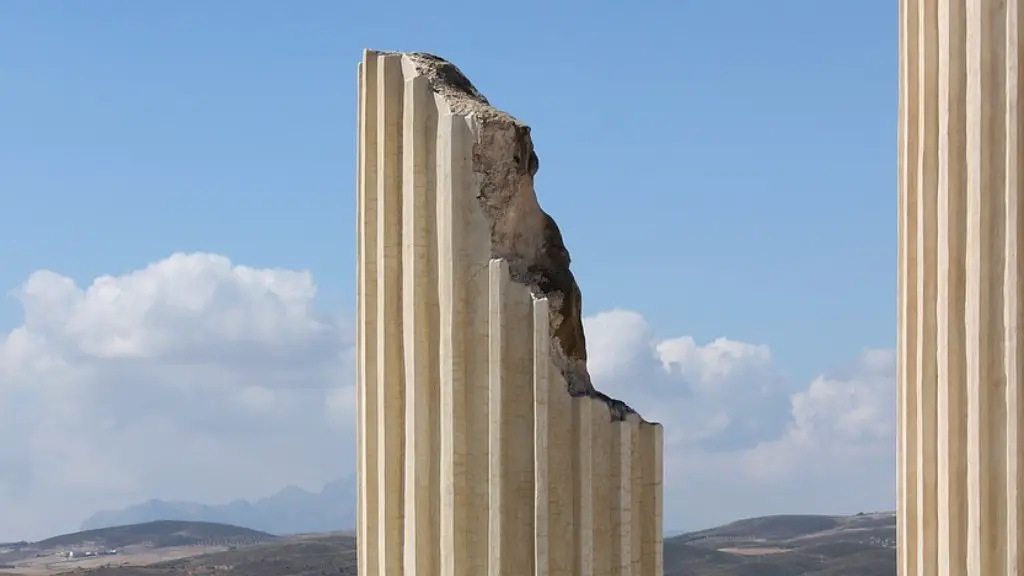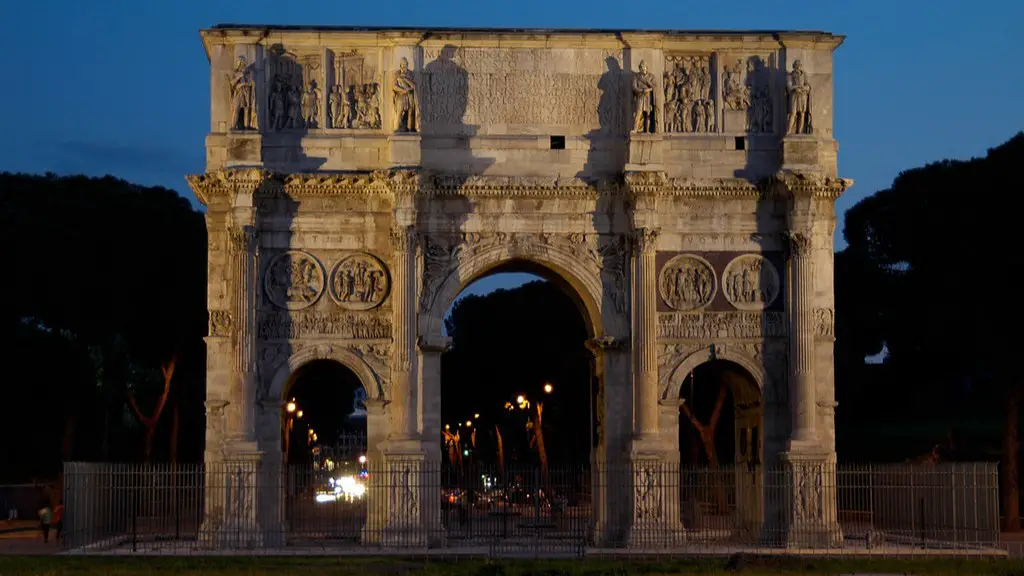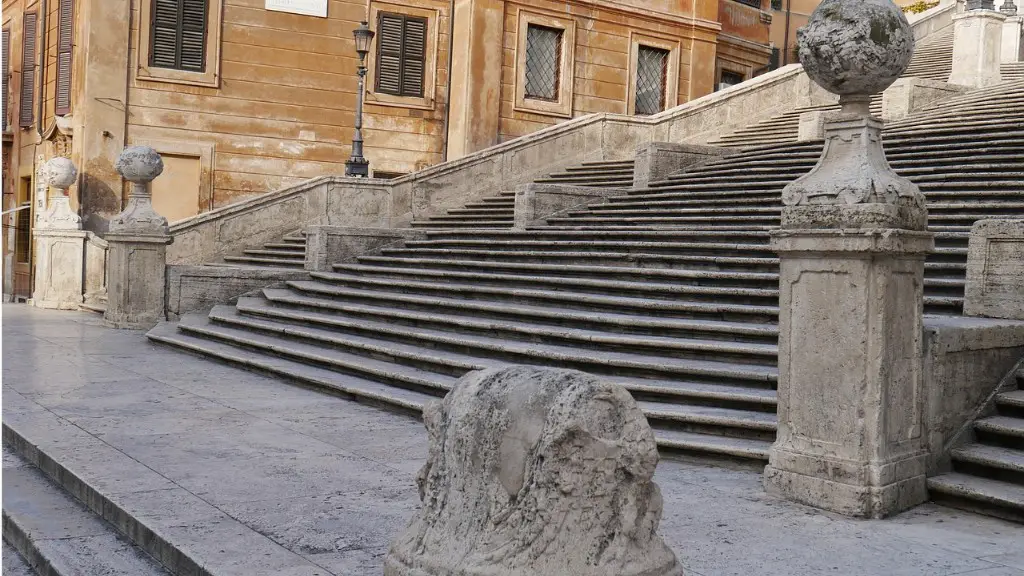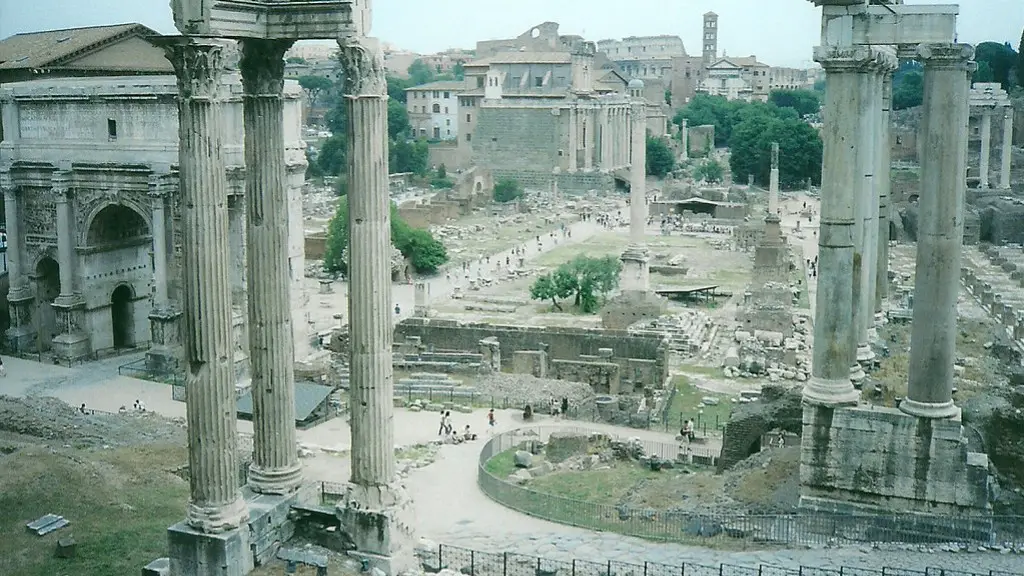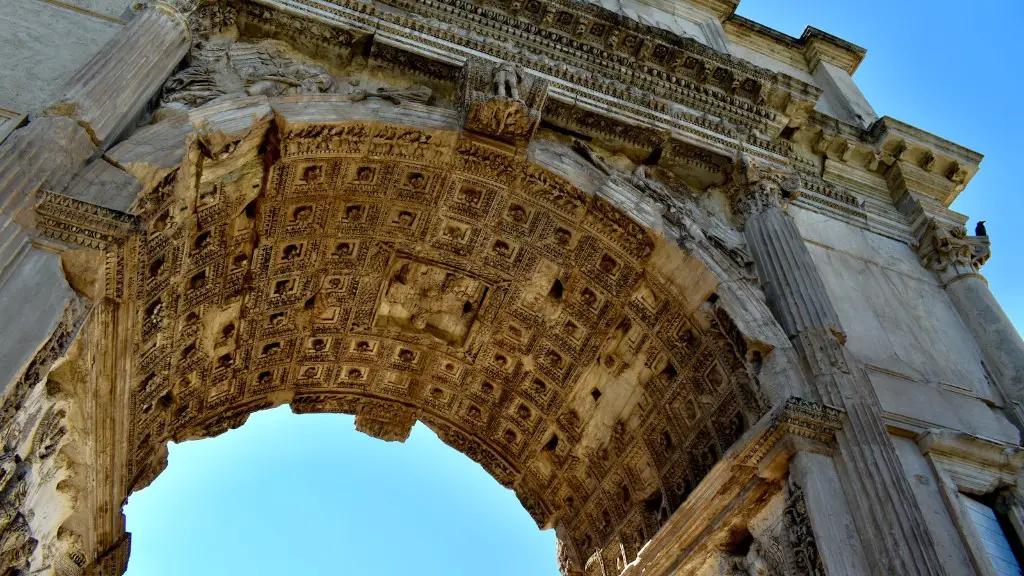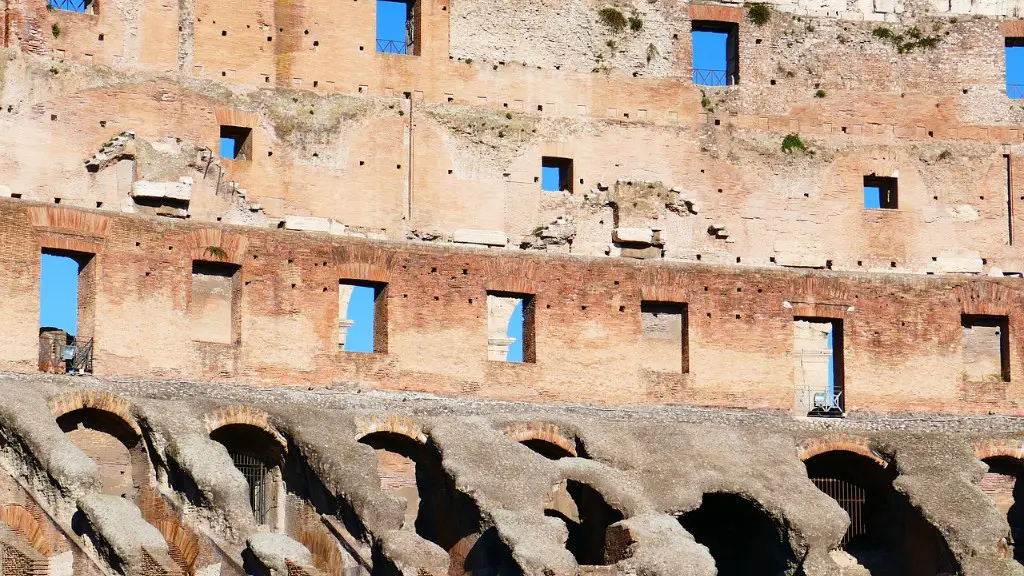Ancient Rome had many religions practiced in its culture. The official religion of the Roman Empire was polytheistic, which was based on various gods and goddesses. However, the Roman religion was changing from polytheism to monotheism during the end of the Roman Empire. Additionally, various other belief systems were present during this time.
The most prominent ancient religion in Rome was the Roman religion, which was a polytheistic belief system based on various gods and goddesses. This religion formed the basis for the Roman culture and was heavily practiced in the city. The main god in this religion was Jupiter, the god of the sky and ruler of the gods. Other gods such as Apollo, Neptune, Venus, and Mars were also venerated by the Romans.The religious ceremony involved offerings of food, drink, and other items to the gods in exchange for favors or protection. The Roman religion was based on the will of the gods and was believed to bring fortune, success, health, and other blessings to those who followed it.
Besides the Roman religion, there were also other religions in ancient Rome. One of these was the religion of Judaism, which had a large population in the city. Judaism was mainly practiced by the Jewish population and was based on the teachings of the Torah. Another religion was the worship of Mithra, a sun god. It was popular among soldiers and was believed to bring fortune and victory in battle. Christianity also started to spread in Rome during this period of time, and eventually became the official religion of the Roman Empire.
Additionally, Greeks and Egyptians also had religion in Rome. Greek religion was based on mythological stories and beliefs. The main gods in this religion were Zeus, Hades, Hermes, and Dionysus. Egyptian religion mainly revolved around the cult of the sun god Ra, and was based on the worship of other gods such as Horus, Isis, and Horus.
In conclusion, the various religions in Ancient Rome had different beliefs and gods. While the Roman religion was the official religion of the Roman Empire, other religions such as Judaism, Mithraism, Christianity, Greek religion, and Egyptian religion were also present in the city during that period.
Christians and Judaism in Ancient Roman Times
During Ancient Roman times, Christianity and Judaism both had large and influential populations. Christianity spread throughout Rome during the first few centuries and eventually became the official religion of the Roman Empire. During this time, the followers of Jesus Christ would meet in secret houses of worship, known as catacombs. They also had to face persecution by the Romans, and would be sentenced to death if discovered.
Judaism was mainly practiced by the Jewish population, who had long been in the city. They worshiped in the Jerusalem Temple and followed the teachings of the Torah. Although they were generally kept in their own quarters and were not allowed to mix with the general population, some Jews were able to achieve high positions in the Roman Empire.
The relationship between Christianity and Judaism was initially conflictual. Christianity, at first, refused to accept the followers of Judaism and saw them as enemies of Christ. However, over time, the two belief systems began to interact more and even collaborated on various projects. For example, some Christians were known to have taken part in the Mosaic festivals.
At the same time, there was also some tension between Judaism and Christianity. In particular, some Jewish leaders were afraid of the increasing power of the Christian Church and saw it as a threat to their religion. This eventually led to conflicts between the two religions.
In conclusion, Christianity and Judaism both had a significant presence in Ancient Rome. They had different beliefs and practices, but they both contributed to the Roman culture and had a complex relationship with each other.
Religion and Politics In Ancient Rome
Religion was closely linked with politics in Ancient Rome. The Roman religion was heavily involved in government affairs and was seen as a source of legitimacy for the rulers of the Roman Empire. The official religion of the Roman Empire was often used as a tool to strengthen political unity and increase the loyalty of citizens to the state.
The Roman Senate had a major influence on the official religion of the Empire. It was responsible for enacting laws that regulated religion and for giving advice to the emperor on religious matters. The senate also had a major role in providing funds for religious activities and building religious temples.
The emperor also had a great influence over the official religion of the Roman Empire. He had the power to approve or reject religious laws and ceremonies, and his decisions often affected the lives of many citizens. He also had significant control over the state funds allocated to religious activities, and could use this power to promote his own political agendas.
In addition, religion also influenced politics in other ways. Religious festivals were often used as an opportunity to express loyalty to the state and to celebrate the successes of the nation. Moreover, religion provided a set of values and beliefs that influenced people’s opinions of the state, and could be used to sway public opinion in favor of the ruler.
To summarize, religion was closely linked with politics in Ancient Rome. The Roman religion was used as a source of legitimacy for the rulers of the state, and the emperor had great influence over it. Religion also influenced politics in other ways, such as providing a set of values and beliefs that could be used to sway public opinion.
Animism in Ancient Rome
Animism was a belief system that was present in Ancient Rome, along with the other religions such as the Roman religion and Christianity. Animism is the belief that all things, even inanimate objects, have thinkgs a spirit or soul. This belief was based on the idea that the world is alive and that all beings, both living and non-living, are connected in some way.
In Ancient Rome, animism was intertwined with the Roman religion. For example, people believed that the statues of gods and goddesses had a life of their own. They would perform rituals such as burning incense, sacrifices, and even drinking the blood of animals to please the gods. They also believed that the gods could influence their lives in positive and negative ways, so they would perform ceremonies to ask for protection and favor.
Animism was also intertwined with mysticism, which was a belief in the power of magical objects and symbols. This belief was popular among the Roman people, especially the lower classes. People believed that certain charms, talismans, and amulets could protect them from bad luck and bring them luck. They would also make sacrifices to deities such as fate and destiny in order to improve their own lives.
In conclusion, animism was an important belief system in Ancient Rome. It was intertwined with the Roman religion, and was also interconnected with mysticism. People believed that all things, even inanimate objects, had a life of their own, and that magical symbols and charms could protect them from bad luck.
The Pantheon and Religion in Ancient Rome
The Pantheon was a temple dedicated to all the gods of Rome, and was one of the most important religious sites in Ancient Rome. The foundation of the building is believed to date back to the reign of Augustus, and its primary purpose was to serve as a temple of worship to the gods. It was also a place of pilgrimage, where people could go in order to give thanks or ask for favors.
The Pantheon was also a major symbol of the Roman Religion. It was believed that all the gods of Rome resided within the building, and that the Emperor was their representative on earth. Therefore, the temple was seen as a symbol of unity and strength, and it was often used to reaffirm the legitimacy of the ruling Emperor.
The structure of the Pantheon was also significant. The interior was decorated with symbolic imagery, such as the statues of gods and goddesses, and the large dome in the center represented the unity of the gods and the heavens. Additionally, the design of the Pantheon was said to be a representation of the universe itself, and it was believed that the gods resided in its depths.
In conclusion, the Pantheon was an important religious site in Ancient Rome. It was a symbol of the Roman Religion and a place of pilgrimage, where people could go to give thanks and ask for favors. Moreover, its structure and design reflected the beliefs of the Romans, and it was believed to be the home of the gods.
Rituals in Ancient Roman Religion
Rituals were an important part of the Ancient Roman Religion. They were seen as a way to connect with the gods and to ensure favor and protection. The Romans believed that the gods had control over their lives, and so they would perform rituals in order to gain their favor.
The main rituals performed by the Romans were animal sacrifices and offerings. These sacrifices took place in temples dedicated to the gods, such as the Temple of Jupiter or the Temple of Mars. Offerings to the gods usually included animals, food, and drink. They were believed to be an exchange of goods, with the gods granting favors in return for the offerings.
The Romans also practiced divination, which was the practice of interpreting the will of the gods. This was done through various methods, such as reading the entrails of animals or interpreting the positions of the stars. The goal was to gain insight into the future and to receive guidance from the gods.
In conclusion, rituals were an important part of the Ancient Roman Religion. They were believed to be a way to gain favor from the gods and to receive guidance. The main rituals practiced by the Romans were animal sacrifices and offerings, and divination was used to gain insight into the future.
